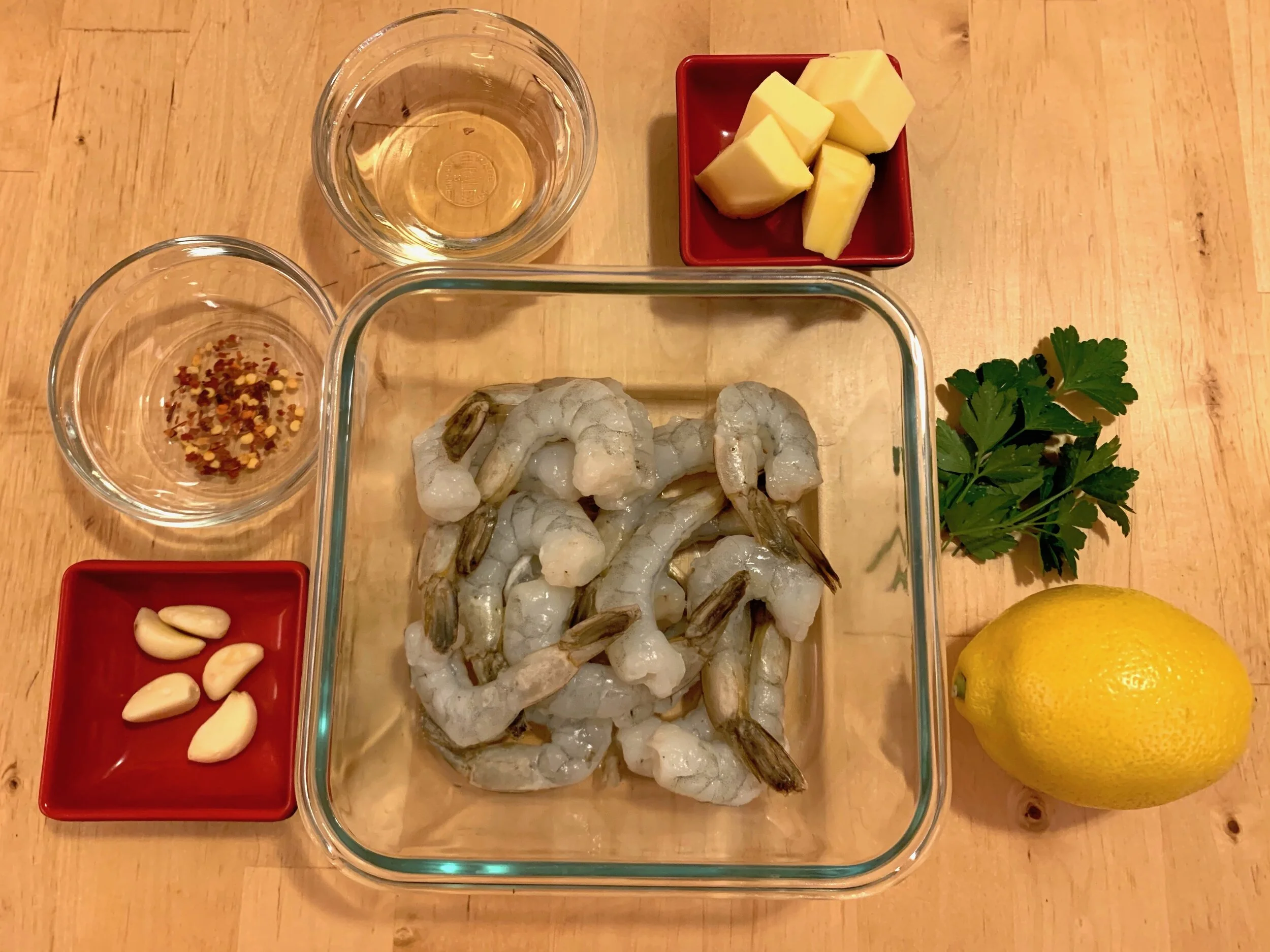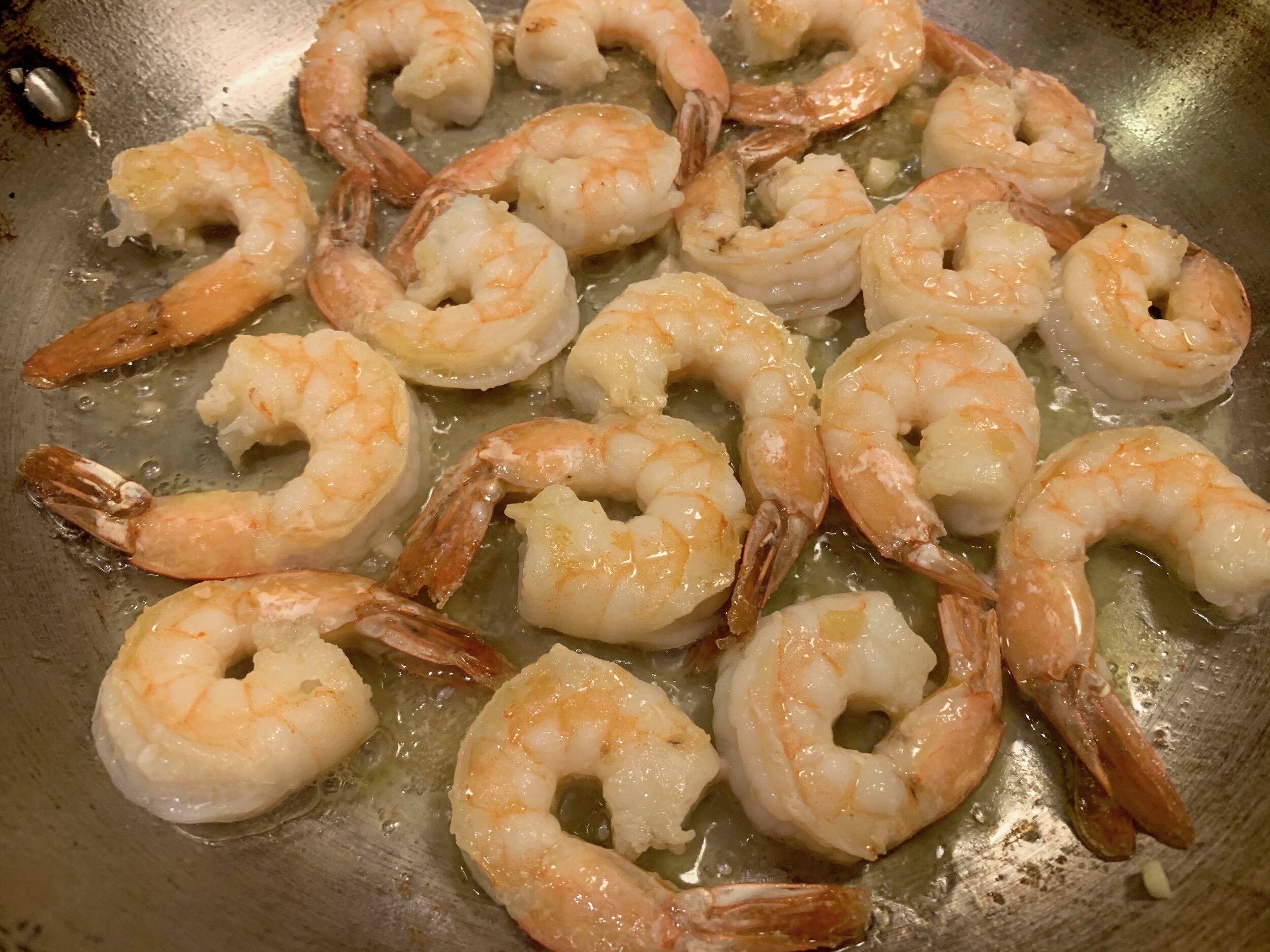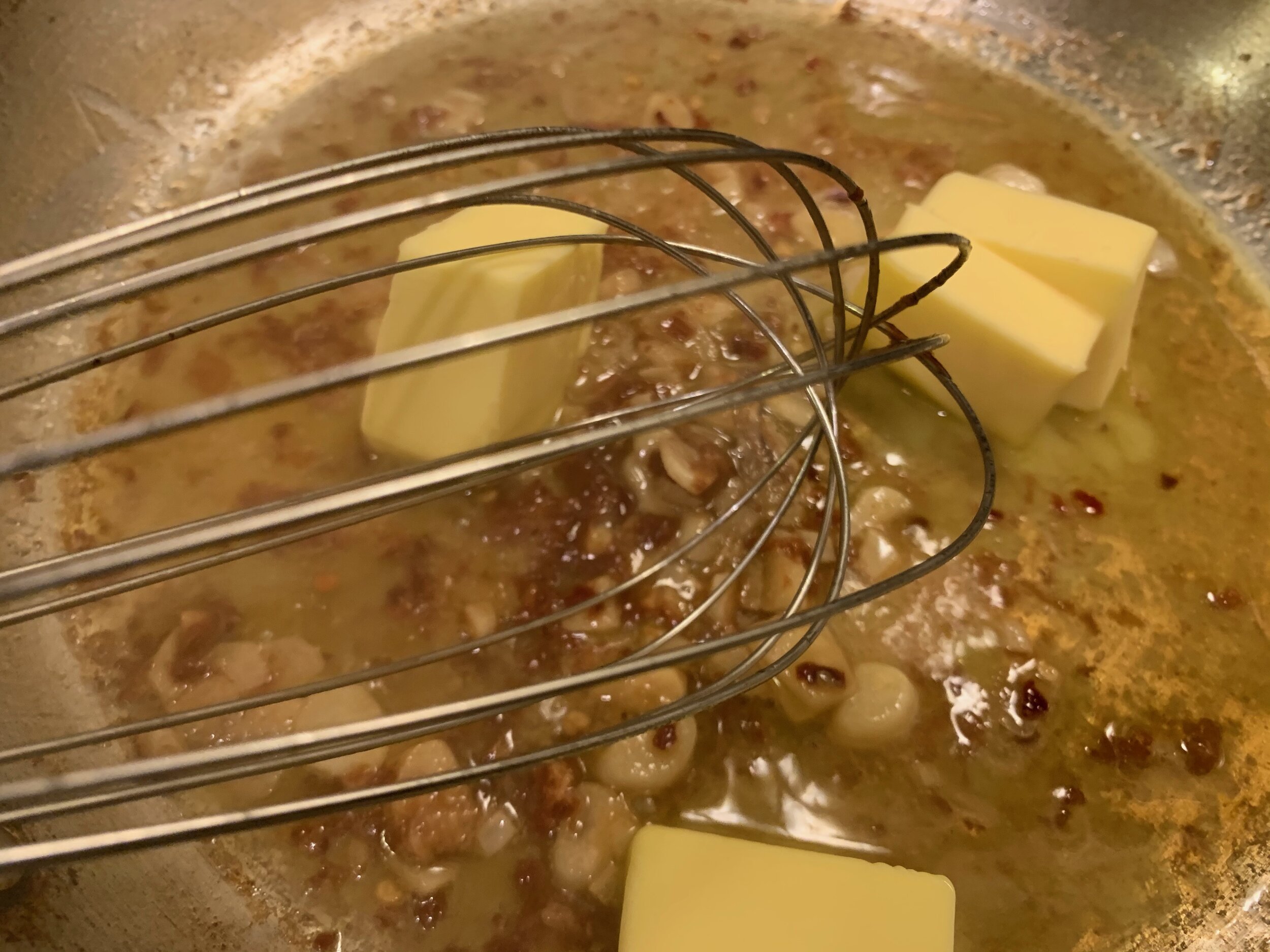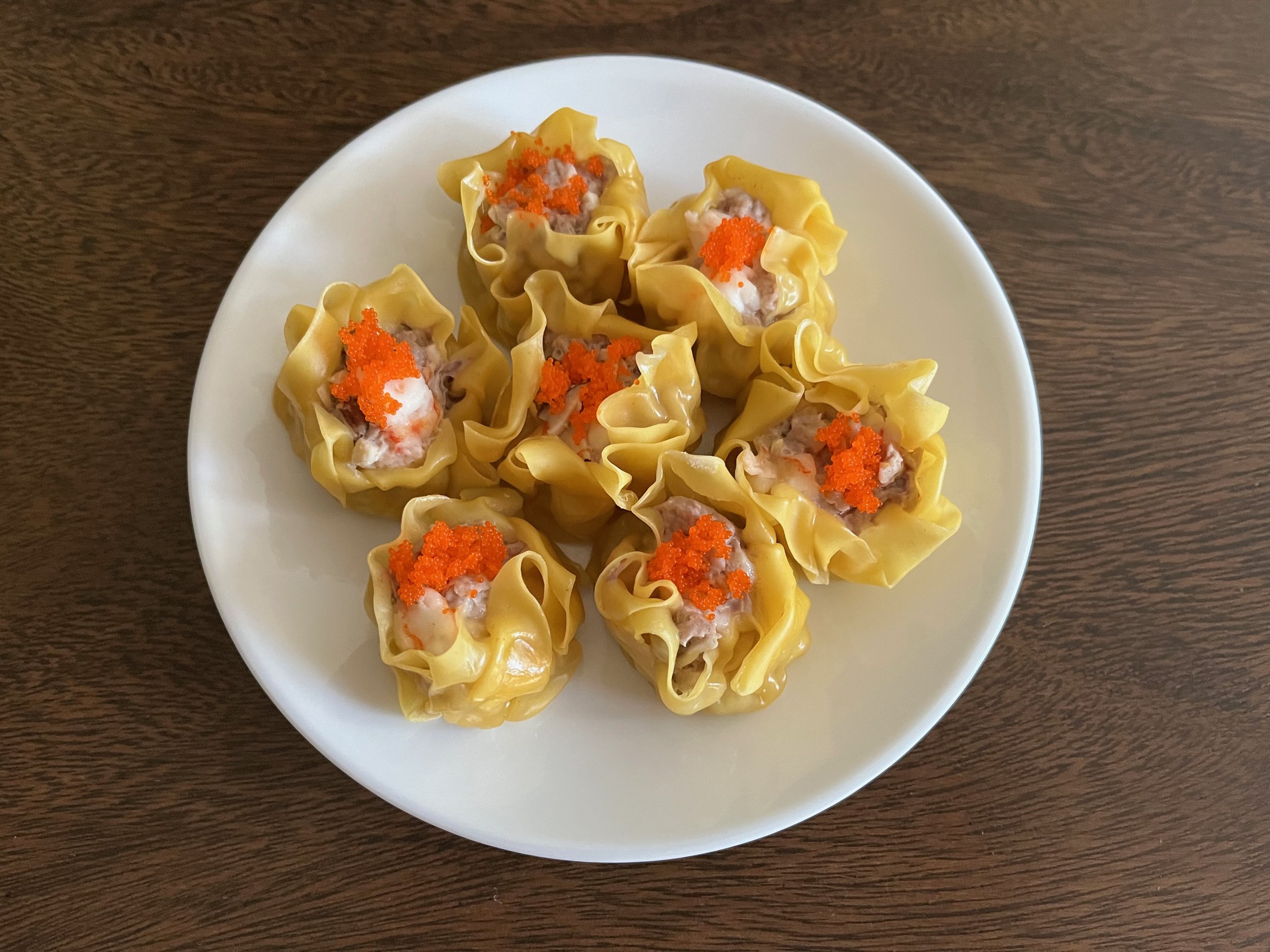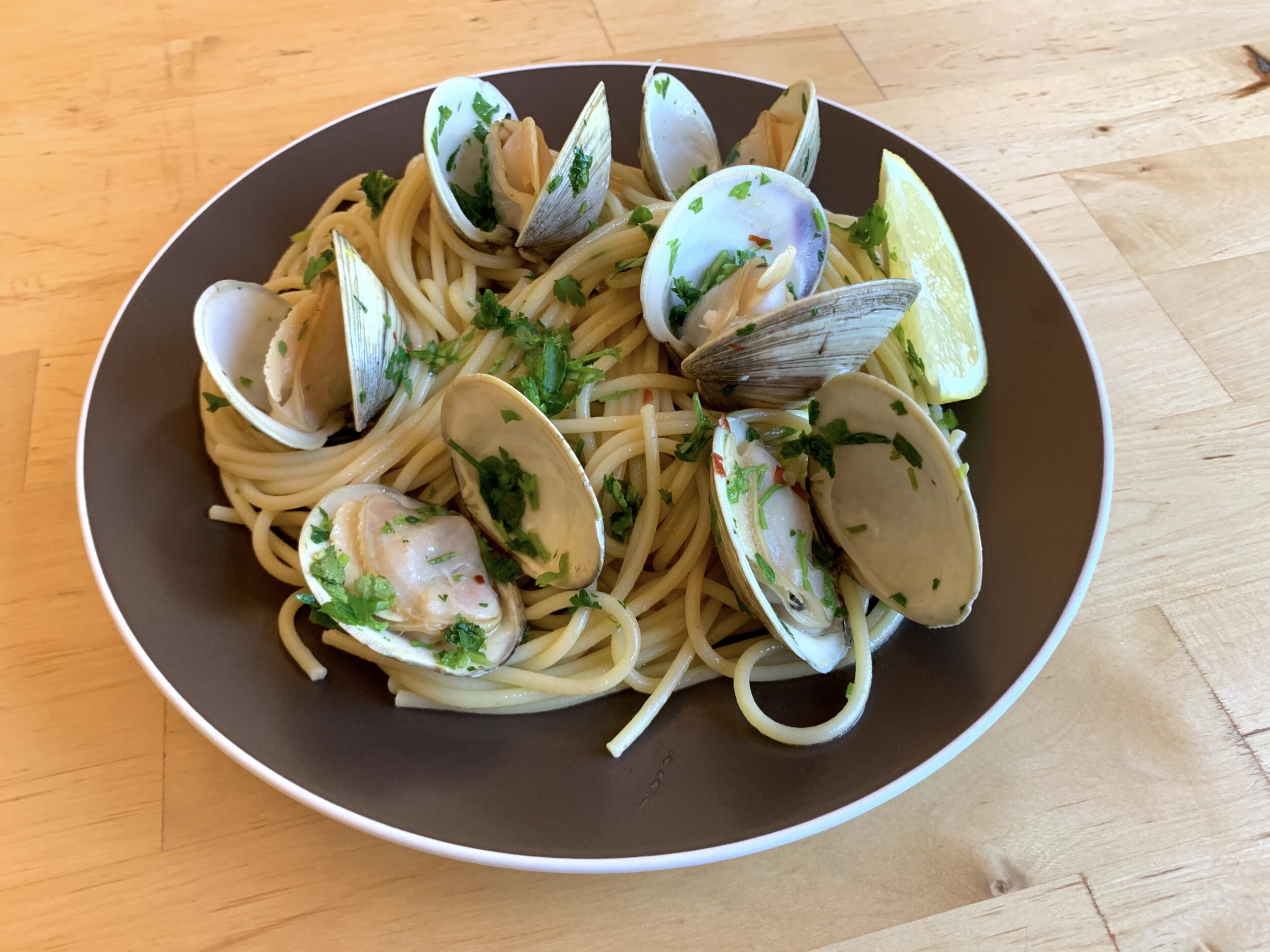Shrimp Scampi

Gamberi alla Scampi
Shrimp scampi is a classic Italian-American dish—succulent shrimp tossed in a rich sauce made of butter, garlic, and white wine. Its name, however, causes a great deal of confusion, as the dish contains shrimp but no actual scampi (the lobster Nephrops norvegicus, a native to northeastern Atlantic and Mediterranean waters).[1] Many food historians believe the name originated with Italian immigrants to America, who found abundant shrimp but no scampi. They prepared the shrimp in a fashion similar to how they’d have cooked scampi tails back home, and called the dish “gamberi alla scampi,” or “shrimp in the style of scampi.” This eventually got shortened in English to just “shrimp scampi.”[2] Controversial nomenclature aside, shrimp scampi is a delicious dish, and a great recipe to try if you’re just starting to learn how to cook shrimp at home!
Ingredients
1 lb shrimp, peeled and deveined
5 cloves garlic
2 oz butter, cubed
¼ cup white wine
½ tsp salt
¼ tsp red pepper flakes
1 lemon
2 tbsp parsley, chopped
Olive oil
Begin by mincing two of the cloves of garlic. In a bowl, toss the minced garlic with the shrimp, ½ teaspoon salt, and about 2 teaspoons olive oil. Set the shrimp aside to marinate for 30 minutes. While the shrimp is marinating, we will do a bit of mise en place. Thinly slice the remaining 3 cloves of garlic, and set the sliced garlic aside. We also need about 1 tablespoon of lemon juice for the sauce. Get this from 1 half of your lemon, and cut the remaining half a lemon into wedges for serving. Cut the butter into cubes, and keep chilled until needed. Chop the parsley and set aside.
When you’re ready to cook, heat about 1 tablespoon olive oil over medium heat in a pan large enough to hold all of the shrimp. When the oil is up to temperature, add the shrimp to the pan in a single layer. For this dish, we are not looking to brown the shrimp, so keep the heat in the pan from getting too high. Because shrimp is so lean, it is easy to overcook. In a dish like shrimp scampi, without many textural elements, there’s nowhere to hide overcooked shrimp. At this stage, we want to cook the shrimp about 80% of the way to done. Later on, we’ll finish the shrimp in the sauce. Cook the shrimp for 1 minute per side, flipping once.
Once the shrimp have turned pink and are mostly cooked through, remove them from the pan with a slotted spoon and set aside. The 2-minute cook time is intended for shrimp in the 30-40 count per pound size range. If your shrimp are smaller or larger than this, you should adjust the cook time accordingly.
Add the sliced garlic and red pepper flakes to the pan and fry the aromatics in the olive oil for 30 seconds, or until fragrant. Then pour ¼ cup white wine into the pan and cook, stirring occasionally, until the wine has reduced by half. This should take about 3 minutes. Be sure to scrape up any fond that the shrimp left behind on the bottom of the pan. When the wine is reduced, add the lemon juice and cubed butter to the pan and begin whisking vigorously to build a partial emulsion. Continue to cook and whisk for 3 more minutes, until the butter has melted and the sauce has thickened.
Return the shrimp to the pan, together with any juices the shrimp released while resting. Toss the shrimp in the sauce and cook, tossing constantly, for about 1-2 minutes, or until the shrimp are just cooked through. Plate the shrimp, top with chopped parsley, and serve immediately. You can choose to serve the shrimp over cooked pasta, or alongside some crusty bread to mop up the sauce.
Substitutions
The timings in this recipe are meant for shrimp in the 30/40 size range. If you are using larger or smaller shrimp, adjust your cook times accordingly. If you have access to real scampi or langoustines, you can use those instead of shrimp in this recipe. If you want a spicier dish, increase the amount of red pepper flakes, or use a fresh red chili. For a bit of added crunch, sprinkle over some toasted breadcrumbs.
[1] In much of Europe, scampi is legally defined as the meat of Nephrops norvegicus, a small lobster species. The species is sometimes marketed as Dublin Bay prawns, Norway lobster, or langoustines. Today, nearly half of all scampi are caught in the waters of the United Kingdom.
[2] To add to the confusion, in the United States the word “scampi” has come to refer to the butter-garlic sauce, resulting in even more bizarrely named dishes like “chicken scampi.”
Recipe
Prep Time: 5 min Cook Time: 10 min Total Time: 50 min
(+30 min inactive)
Difficulty: 3/5
Heat Sources: 1 burner
Equipment: pan
Servings: 4
Ingredients
1 lb shrimp, peeled and deveined
5 cloves garlic
2 oz butter, cubed
¼ cup white wine
½ tsp salt
¼ tsp red pepper flakes
1 lemon
2 tbsp parsley, chopped
Olive oil
Instructions
1. Mince two cloves of garlic, and toss together the shrimp, minced garlic, salt, and about 2 tsp olive oil. Set aside to marinate for 30 min. While the shrimp marinates, thinly slice the remaining 3 cloves of garlic and set aside. Squeeze about 1 tbsp lemon juice and set aside.
2. Heat about 1 tbsp olive oil in a pan over medium heat. When the pan is hot, add the shrimp to the pan in a single layer.
3. Cook the shrimp for 1 minute per side, flipping once, or until cooked most of the way through. Remove the shrimp from the pan with a slotted spoon and set aside.
4. Add the sliced garlic and red pepper flakes to the pan and fry for 30 seconds or until fragrant. Then pour the wine into the pan and cook until reduced by half, stirring occasionally, about 3 minutes.
5. Add the lemon juice and chilled cubed butter, and continue to cook, whisking constantly, for 3 more minutes, or until the butter has melted and the sauce has thickened.
6. Return the shrimp to the pan, together with any shrimp juices. Toss the shrimp in the sauce and cook, tossing constantly, until the shrimp are fully cooked through, about 1-2 minutes depending on the size of your shrimp.
7. Plate the shrimp and top with chopped parsley. Serve immediately with lemon wedges, and pasta or crusty bread.
